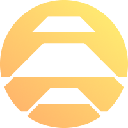-
 Bitcoin
Bitcoin $113100
-1.74% -
 Ethereum
Ethereum $4800
1.16% -
 XRP
XRP $3.041
0.36% -
 Tether USDt
Tether USDt $0.9999
0.02% -
 BNB
BNB $876.6
-0.40% -
 Solana
Solana $205.1
0.96% -
 USDC
USDC $0.0000
0.00% -
 Dogecoin
Dogecoin $0.2345
-0.10% -
 TRON
TRON $0.3629
0.40% -
 Cardano
Cardano $0.9260
1.91% -
 Chainlink
Chainlink $26.20
0.28% -
 Hyperliquid
Hyperliquid $46.04
2.89% -
 Sui
Sui $3.722
0.22% -
 Stellar
Stellar $0.4113
-0.53% -
 Ethena USDe
Ethena USDe $1.000
0.03% -
 Bitcoin Cash
Bitcoin Cash $590.3
0.39% -
 Avalanche
Avalanche $25.82
-0.01% -
 Hedera
Hedera $0.2504
-0.92% -
 Litecoin
Litecoin $119.1
-1.33% -
 UNUS SED LEO
UNUS SED LEO $9.598
0.03% -
 Toncoin
Toncoin $3.315
-1.69% -
 Shiba Inu
Shiba Inu $0.00001308
-1.02% -
 Uniswap
Uniswap $11.06
-2.10% -
 Polkadot
Polkadot $4.149
-1.10% -
 Dai
Dai $1.000
0.03% -
 Aave
Aave $350.7
-1.07% -
 Cronos
Cronos $0.1587
0.97% -
 Bitget Token
Bitget Token $4.664
-0.71% -
 Monero
Monero $274.5
3.42% -
 Ethena
Ethena $0.7021
-4.70%
What is Bonding Curve Sale?
Bonding curve sales offer continuous, automated token distribution via smart contracts, dynamically adjusting prices based on supply using various mathematical functions. Careful curve selection is crucial, balancing rapid fundraising with broader distribution and mitigating potential price volatility risks.
Mar 11, 2025 at 05:30 am
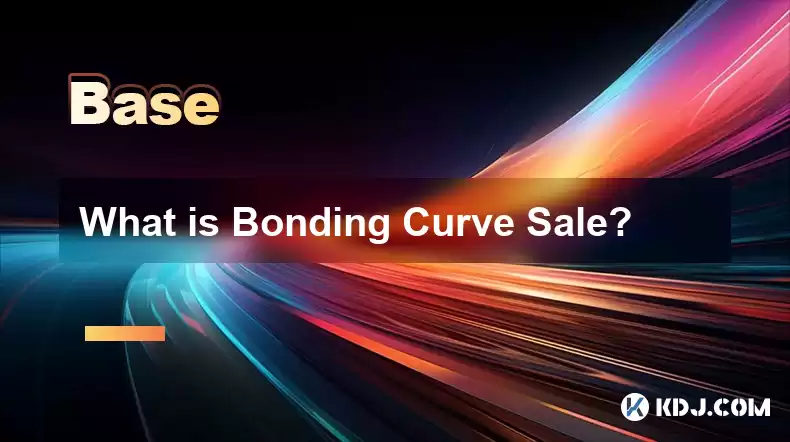
Key Points:
- Bonding curves are automated market makers (AMMs) that utilize a predetermined mathematical function to determine the price of a token based on its supply.
- Bonding curve sales are a fundraising mechanism where projects sell their tokens using a bonding curve, allowing for continuous token sales and price discovery.
- There are various types of bonding curves, each with its own characteristics and implications for token price and distribution.
- Understanding the risks and benefits of bonding curve sales is crucial for both projects and investors.
What is a Bonding Curve Sale?
A bonding curve sale is a novel fundraising method in the cryptocurrency space that leverages a sophisticated algorithm to determine token price and facilitate continuous token distribution. Unlike traditional fundraising methods with fixed token prices, bonding curves dynamically adjust the token price based on the supply already in circulation. This adjustment is governed by a pre-defined mathematical function embedded within the smart contract. The more tokens are purchased, the higher the price becomes. This mechanism creates a self-regulating market for the token, often aiming for a smoother, more predictable price discovery than other methods.
How Does a Bonding Curve Work?
The core of a bonding curve sale is its underlying mathematical function, which dictates the relationship between the token supply and its price. This function can take various forms, leading to different curve shapes. Common examples include linear, exponential, and logarithmic curves. The choice of function significantly impacts the token's price volatility and the distribution of tokens among early and late investors. For instance, a steeply rising curve will favor early investors, while a flatter curve allows more even distribution.
Types of Bonding Curves:
Several bonding curve models exist, each with its own advantages and disadvantages.
- Linear Bonding Curves: These offer a straightforward relationship between supply and price. The price increases linearly with each additional token purchased. This is the simplest type but may not be the most effective for token distribution.
- Exponential Bonding Curves: Here, the price increases exponentially with the supply. This model incentivizes early participation as the price increases rapidly with increased demand. However, it can also create significant barriers to entry for later investors.
- Logarithmic Bonding Curves: These curves offer a slower price increase compared to exponential curves. This can lead to a more gradual distribution of tokens, potentially attracting a broader range of participants.
The choice of curve significantly impacts the token's price trajectory and distribution among investors. The project team must carefully select the curve that best aligns with its goals and the desired tokenomics.
Implementing a Bonding Curve Sale:
Implementing a bonding curve sale usually involves several steps:
- Designing the Bonding Curve: Choosing the appropriate mathematical function is the first crucial step. This function defines the price-supply relationship and significantly impacts the sale's success.
- Smart Contract Development: A secure and auditable smart contract is essential to manage the bonding curve and ensure the sale's integrity. This contract handles token issuance, price calculations, and fund management.
- Deployment and Launch: Once the smart contract is thoroughly audited and tested, it's deployed to a blockchain network, and the sale is launched. The process is typically automated, allowing continuous token purchases.
- Monitoring and Management: Post-launch, the project team monitors the curve's performance and adjusts parameters if necessary, though this is generally less common with well-designed curves. Transparency is key.
Risks and Benefits of Bonding Curve Sales:
Bonding curve sales present both advantages and risks.
Benefits:
- Automated and Continuous: They automate the token sale process, eliminating the need for manual intervention. Tokens are sold continuously, adapting to market demand.
- Price Discovery: The bonding curve mechanism facilitates a decentralized and transparent price discovery process.
- Decentralized: The sale is typically managed by a smart contract, minimizing reliance on centralized entities.
Risks:
- Complexity: Designing and implementing an effective bonding curve can be complex, requiring expertise in mathematics and smart contract development.
- Price Volatility: Depending on the chosen curve, the price can be highly volatile, potentially impacting investor sentiment.
- Manipulation: While generally robust, sophisticated attacks could potentially exploit vulnerabilities in the smart contract.
The Role of Liquidity:
A key consideration with bonding curve sales is the provision of liquidity. The curve itself acts as a liquidity pool, but projects might supplement this with additional liquidity measures to ensure smooth trading after the initial sale. Insufficient liquidity can lead to price slippage and hinder the token's usability.
Choosing the Right Bonding Curve:
The selection of a bonding curve is critical. Factors to consider include the project's goals (rapid fundraising vs. broad distribution), the desired token price trajectory, and risk tolerance. Careful analysis and modeling are crucial before choosing a curve type and parameters. Poorly designed curves can lead to unintended consequences.
Frequently Asked Questions:
Q: What is the difference between a bonding curve and a regular ICO?
A: A regular ICO has a fixed token price and a limited sale period. A bonding curve sale has a dynamically changing token price based on the supply, and the sale is typically continuous.
Q: Can a bonding curve be manipulated?
A: While well-designed bonding curves are resistant to manipulation, vulnerabilities in the smart contract code could be exploited. Thorough audits are crucial to mitigate this risk.
Q: What happens if the price on a bonding curve becomes too high?
A: A very high price can deter new buyers, leading to slower token sales. The choice of curve directly influences how rapidly the price increases.
Q: Are bonding curve sales suitable for all projects?
A: No, bonding curve sales are best suited for projects with a strong understanding of tokenomics and a clear strategy for managing the dynamic price fluctuations. It's not a one-size-fits-all solution.
Q: What are the long-term implications of using a bonding curve?
A: The long-term effects depend on the curve's design and the market's reaction to the token. Successful bonding curves can create stable and liquid markets, while poorly designed ones can lead to price instability and low adoption.
Disclaimer:info@kdj.com
The information provided is not trading advice. kdj.com does not assume any responsibility for any investments made based on the information provided in this article. Cryptocurrencies are highly volatile and it is highly recommended that you invest with caution after thorough research!
If you believe that the content used on this website infringes your copyright, please contact us immediately (info@kdj.com) and we will delete it promptly.
- Ozak AI, Binance, and Coinbase: Navigating the Crypto Landscape in 2025
- 2025-08-25 05:05:13
- Coinbase, Hacker, and Solana: Decoding the $8M Heist
- 2025-08-25 05:30:12
- Riding the Altcoin Wave: Momentum, Tech, and Wall Street's Embrace
- 2025-08-25 06:05:21
- Rare Find: The 1-Cent Coin Worth €6,000!
- 2025-08-25 02:45:28
- Hacktivism, Tokenization, and the Decentralized Future: A New Yorker's Take
- 2025-08-25 02:45:28
- PayPal, Stablecoin, and Boost: Riding the Wave of Digital Finance
- 2025-08-25 04:42:18
Related knowledge
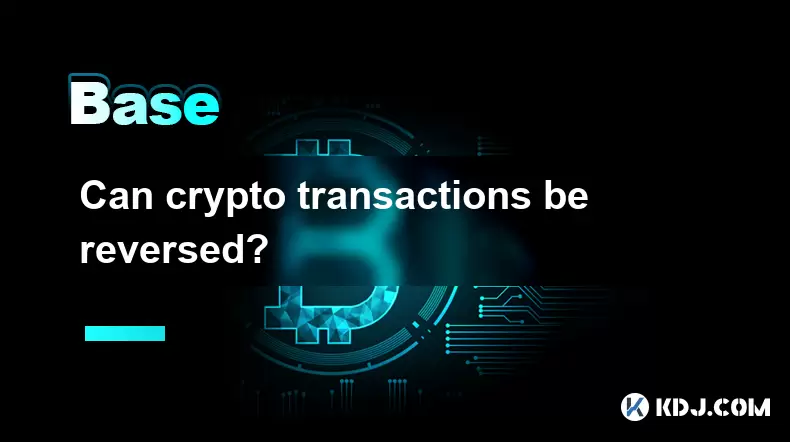
Can crypto transactions be reversed?
Aug 10,2025 at 01:35am
Understanding the Immutability of Blockchain TransactionsCryptocurrency transactions are built on blockchain technology, which is designed to be immut...
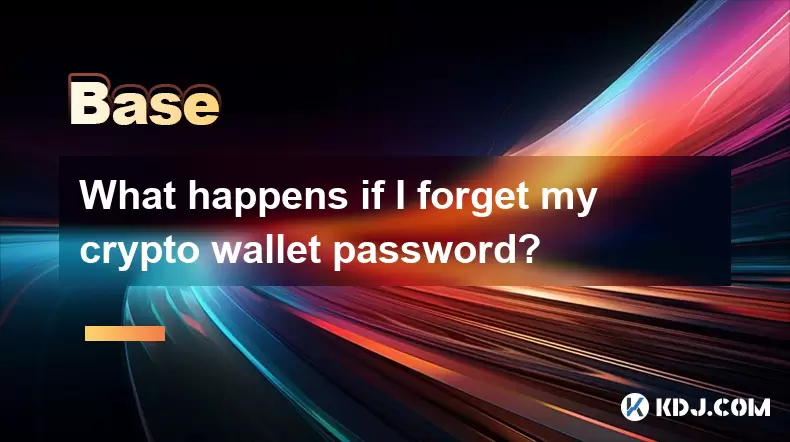
What happens if I forget my crypto wallet password?
Aug 09,2025 at 08:50am
Understanding the Role of a Crypto Wallet PasswordA crypto wallet password serves as a critical security layer that protects access to your digital as...
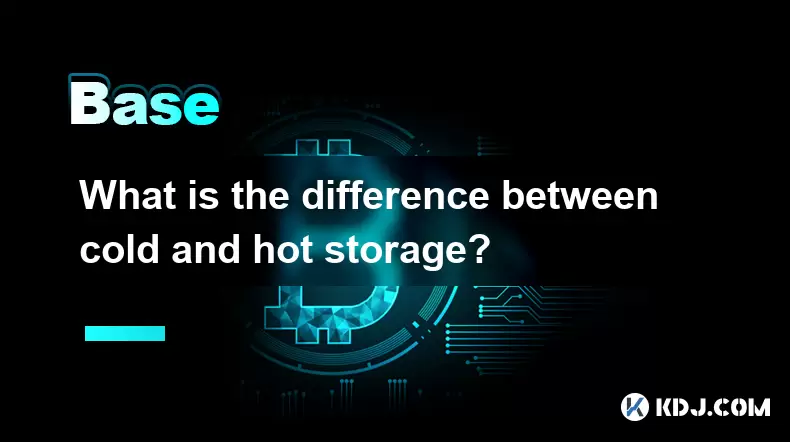
What is the difference between cold and hot storage?
Aug 12,2025 at 01:01am
Understanding Cold Storage in CryptocurrencyCold storage refers to offline methods of storing cryptocurrency private keys, ensuring they are not expos...
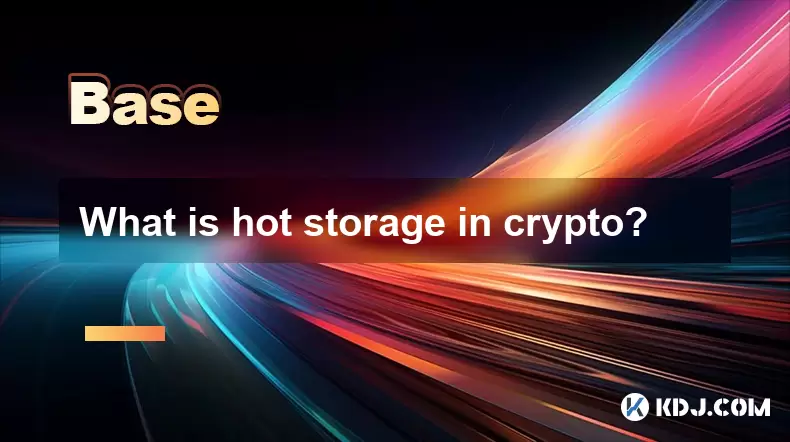
What is hot storage in crypto?
Aug 11,2025 at 07:08am
Understanding Hot Storage in CryptocurrencyHot storage refers to cryptocurrency wallets that are connected to the internet. Unlike cold storage soluti...

What is cold storage in crypto?
Aug 13,2025 at 11:35am
Understanding Cold Storage in CryptocurrencyCold storage in cryptocurrency refers to a method of storing digital assets offline, away from internet-co...
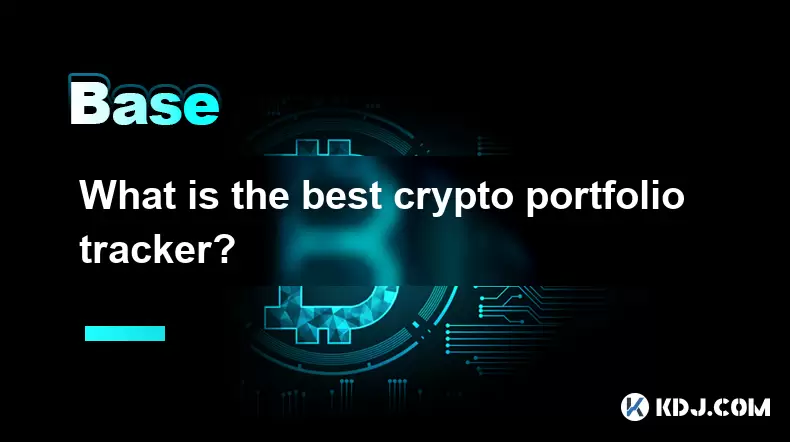
What is the best crypto portfolio tracker?
Aug 10,2025 at 05:08am
Understanding the Role of a Crypto Portfolio TrackerA crypto portfolio tracker is a digital tool designed to help investors monitor the performance of...

Can crypto transactions be reversed?
Aug 10,2025 at 01:35am
Understanding the Immutability of Blockchain TransactionsCryptocurrency transactions are built on blockchain technology, which is designed to be immut...

What happens if I forget my crypto wallet password?
Aug 09,2025 at 08:50am
Understanding the Role of a Crypto Wallet PasswordA crypto wallet password serves as a critical security layer that protects access to your digital as...

What is the difference between cold and hot storage?
Aug 12,2025 at 01:01am
Understanding Cold Storage in CryptocurrencyCold storage refers to offline methods of storing cryptocurrency private keys, ensuring they are not expos...

What is hot storage in crypto?
Aug 11,2025 at 07:08am
Understanding Hot Storage in CryptocurrencyHot storage refers to cryptocurrency wallets that are connected to the internet. Unlike cold storage soluti...

What is cold storage in crypto?
Aug 13,2025 at 11:35am
Understanding Cold Storage in CryptocurrencyCold storage in cryptocurrency refers to a method of storing digital assets offline, away from internet-co...

What is the best crypto portfolio tracker?
Aug 10,2025 at 05:08am
Understanding the Role of a Crypto Portfolio TrackerA crypto portfolio tracker is a digital tool designed to help investors monitor the performance of...
See all articles


















































































